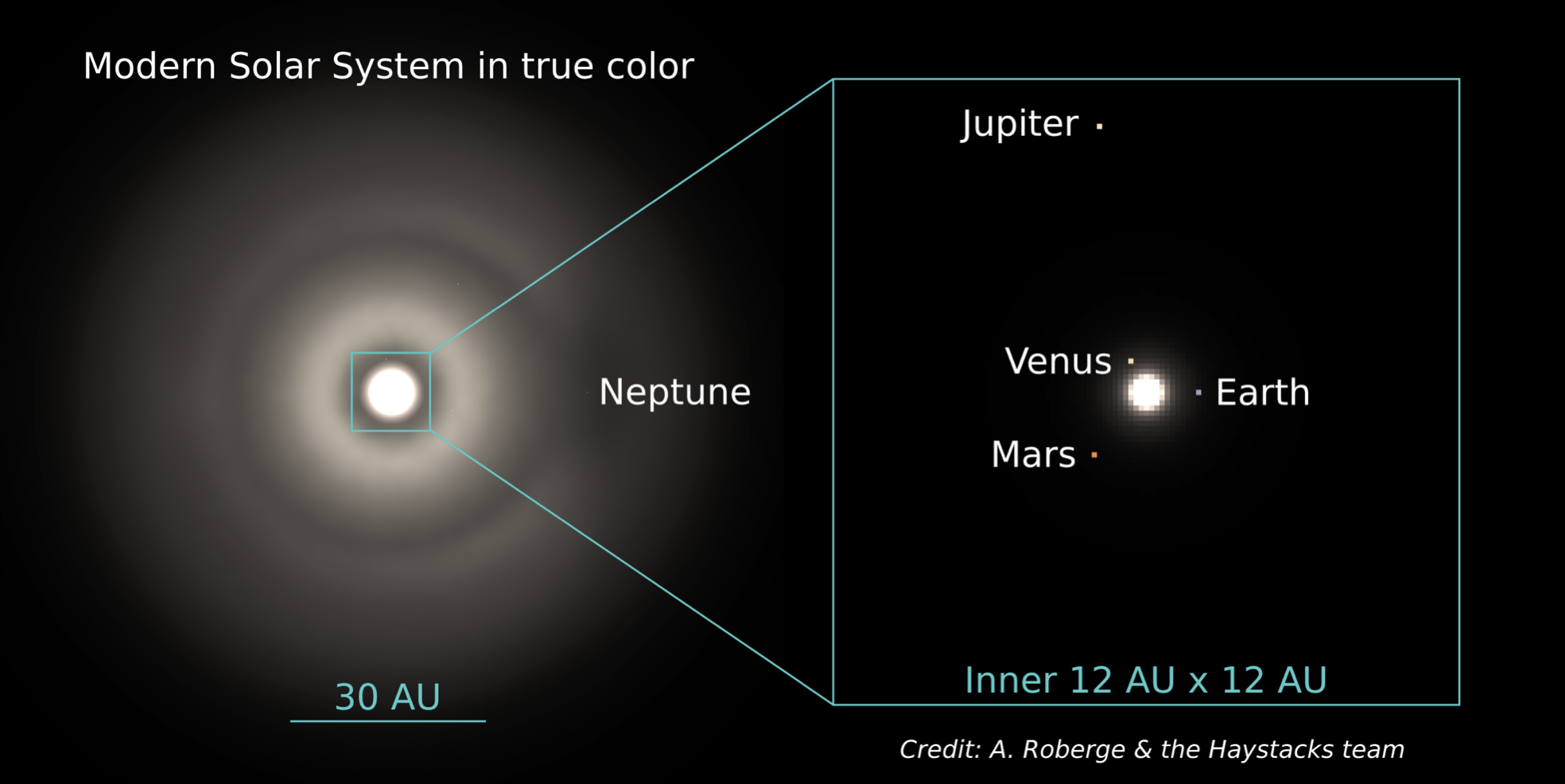
Introduction Further Details Model Downloads Simulated Data
Introduction
|
In recent years, the rapid pace of exoplanet discoveries has brought the exciting goal of finding habitable planets around nearby stars (also known as “exoEarths”) and probing them for signs of life within reach. Discovering life outside the Solar System would revolutionize the human perspective on our place in the cosmos and dramatically transform whole fields of science.
The Haystacks Project will help prepare for future exoEarth observations by better defining the challenge, using the knowledge gained through decades of Solar System and extrasolar planetary studies. Haystacks models are high-fidelity spatial and spectral models of complete planetary systems including star, planets, interplanetary dust, and astrophysical background sources. They are intended for use in simulations of direct imaging and spectroscopy with high-contrast instruments on exoplanet missions. |
 An artist's conception of an exoEarth. Image credit: NASA / Lynette Cook
An artist's conception of an exoEarth. Image credit: NASA / Lynette Cook
|
| A slice from our first model – the modern Solar System – is shown below. The model includes spectral information for every element, which allows us to generate images at any wavelength between 0.3 μm and 2.5 μm. For ease of viewing, the Sun and astrophysical background sources are not included. The image on the left shows the entire Solar System, the image on the right shows the inner portion. At both distance scales, and at all wavelengths, the most conspicuous feature of the Solar System (after the Sun) is the haze of emission coming from interplanetary dust. The partial ring in the outer Solar System dust is caused by the dynamical influence of Neptune. |
 A slice from a high-fidelity model of the Solar System, viewed face-on from the outside. Image credit: A. Roberge & the Haystacks Team
A slice from a high-fidelity model of the Solar System, viewed face-on from the outside. Image credit: A. Roberge & the Haystacks Team
Publications
Roberge, A., Rizzo, M. J., Lincowski, A. P., et al. (2017). "Finding the Needles in the Haystacks: High-fidelity Models of the Modern and Archean Solar System for Simulating Exoplanet Observations", PASP, 129, 124401Team Members
| Dr. Aki Roberge | (NASA GSFC) | Principal investigator; Exozodiacal dust and debris disk observations |
| Dr. Giada Arney | (NASA GSFC) | Planet spectrum models; Astrophysical background sources |
| Prof. Vikki Meadows | (U of Washington) | Planet atmosphere models |
| Dr. Laurent Pueyo | (STScI) | Instrument models |
| Dr. Maxime Rizzo | (NASA GSFC) | Instrument models |
| Dr. Gregory Snyder | (STScI) | Extragalactic background sources |
| Dr. Chris Stark | (STScI) | Debris disk dynamical theory |
| Dr. Neil Zimmerman | (NASA GSFC) | Instrument models |
| Dr. Margaret Turnbull | (SETI) | Star and planet characteristics |
| Students | ||
|---|---|---|
| Tiffany Jansen | (University of Washington) | 2015 |
| Andrew Lincowski | (University of Arizona) | 2014 |
| Ashlee Wilkins | (UMD, College Park) | 2013 |
| Erika Nesvold | (UMD, Baltimore County) | 2012 |


